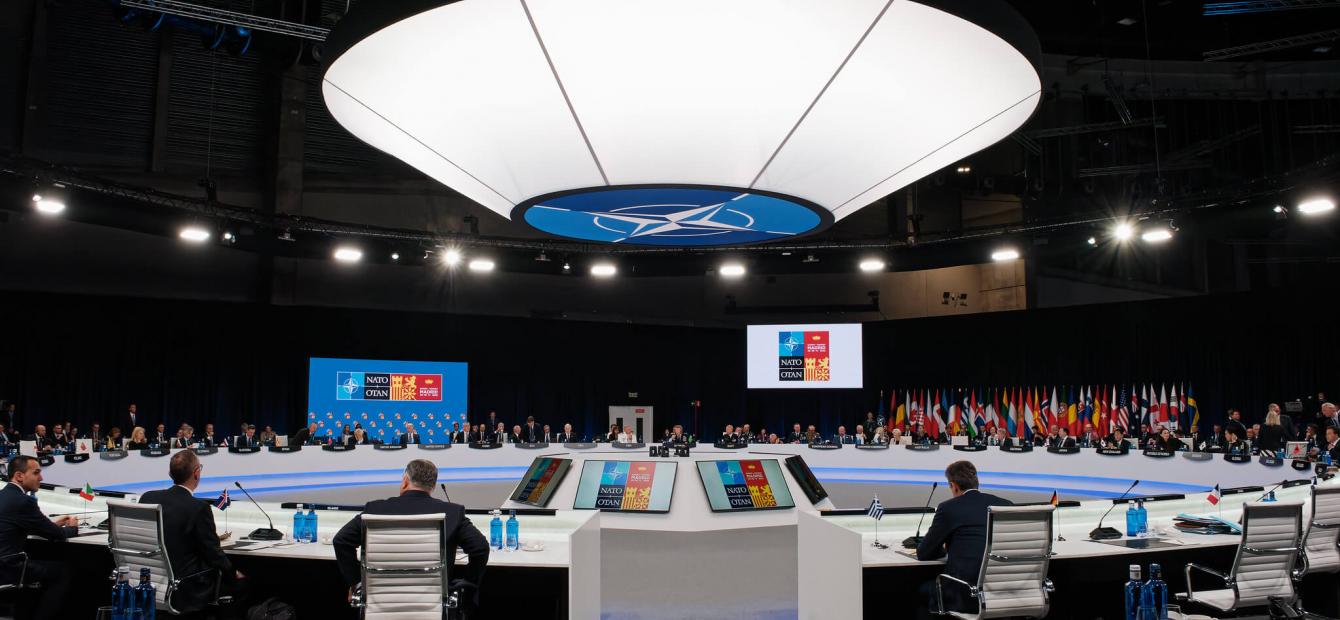
The awakening of NATO’s European member states
NATO’s new Strategic Concept (SC) that was published at the Madrid Summit in June 2022 will be seen as a landmark document that sets the direction of travel for the Alliance in an “age of strategic competition”1 . Yet, the Strategic Concept tells only half the story of the awakening of NATO’s European allies.2
The Strategic Concept is concise, clear and considered, although one needs to read between the lines to properly understand the strategic and political forces at work. Russia is no longer the strategic partner it was back in 2010 – when the last SC was presented – but rather the “significant and direct threat”3 . China is now a “systemic challenge”4 and terrorism the “most direct asymmetric threat”3 .
The new SC also retains the three core tasks of collective defence, crisis management and co-operative security. However, it is collective defence – or rather collective deterrence by denial – that is the clear priority together with collective resilience. Furthermore, there are the expected nods to climate change, women and security, and the pro forma recognition that NATO is a nuclear alliance committed to a nuclear-free world.5
Driven by the war in Ukraine, the centrepiece of the Strategic Concept is a new rapid response force of 300,000 troops which replaces the existing ‘enhanced’ but not very big (or loved) NATO Response Force. At the insistence of the overstretched Americans, this force will be mainly European and kept on ‘high alert’ with much of it deployed to NATO’s eastern and south-eastern flank. The accession of Finland and Sweden to the Alliance will mean that this new central pillar of NATO’s conventional force deterrence could also be deployed to NATO’s expanding northern flank.
A force of that size would normally mean that with rotation there would always be a force of some 100,000 troops kept at high readiness, which will be extremely expensive for NATO’s European allies, since they are grappling with high inflation and post-COVID-19 economies. A standard NATO brigade is normally between 3,200 and 5,500 troops strong. A NATO force of 300,000 personnel will include around 100,000 air and naval personnel. A land force of around 200,000 troops would thus need fifty to sixty European rapid reaction brigades together with all the necessary resources for them to do their respective jobs. There are at best between twenty to thirty such brigades today and some concerns have already been expressed by some Allies that they will be simply unable to meet such a demand.
Many smaller NATO members will also look to the Dutch for leadership
For this reason, several European NATO allies are increasing their respective defence budgets to reach the Alliance’s baseline goal of two per cent of GDP to be spent on defence, of which at least twenty per cent must be spent each year on new equipment. Germany is leading the way (at last) with its commitment to markedly increase its defence budget which is vital given that the German military, the Bundeswehr, will become the central pillar of NATO’s land deterrence on the eastern flank.
The United Kingdom has also committed to spend at least 2.5 per cent GDP on defence “by the end of this decade”6 , whilst the Netherlands has committed to a 5.4 per cent real terms increase in defence expenditure over last year’s defence budget in order to spend two per cent GDP on defence by 2024.7
The Dutch are indicative of both the way forward and the scale of the challenge. After 2024, projected defence cost inflation will mean that real terms Dutch defence expenditure will erode quickly. After decades of hollowing out, the Dutch need not so much to increase their defence expenditure but to completely recapitalise the force if they are to meet the 360-degree, high-end, first responder NATO challenge implicit in the Strategic Concept.
Many smaller NATO members will also look to the Dutch for leadership because the choices the United Kingdom, France and Germany make, let alone the United States, are simply beyond them. In other words, the seriousness with which The Hague takes the new expanded Alliance European Deterrent Force (for that is what it will be) could well be the difference between the awakening of NATO’s European allies or, like Rip van Winkle, they again fall asleep through the coming defence revolution.
Professor Julian Lindley-French is lead author of the 2022 Shadow NATO Strategic Concept
- 1NATO, ‘NATO Secretary General underlines need for strong deterrence and defence’, 13 December 2022.
- 2To properly understand the Strategic Concept one must also read NATO’s first new Military Strategy since 1962 prepared by former Supreme Allied Commander Tod Wolters and his team at SHAPE which is classified, although why it is classified is frankly unclear.
- 3 a b NATO, ‘NATO 2022 Strategic Concept’, 29 June 2022, p. 4.
- 4NATO, ‘NATO 2022 Strategic Concept’, 29 June 2022, p. 5.
- 5Deterrence by denial requires sufficient military strength to deter an adversary from taking even the first step of an invasion. Deterrence by punishment exacts a price for having taken that step.
- 6Prime Minister Boris Johnson at the NATO Madrid Summit. Reuters, ‘Britain to boost defence spending to 2.5% of GDP by end of decade’, 30 June 2022.
- 7Janes, ‘ Netherlands boosts defence spending’, 23 September 2021.


